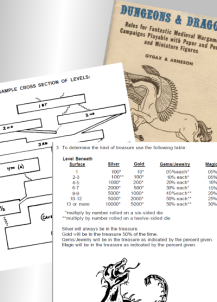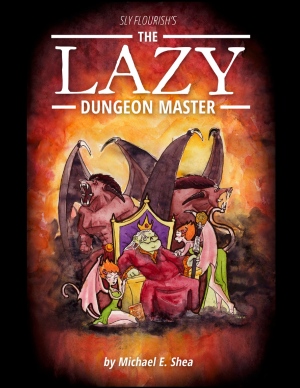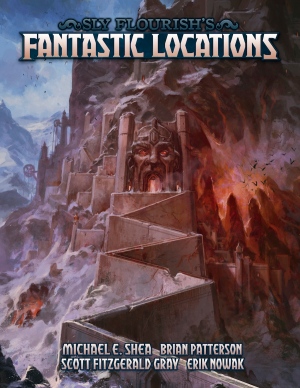In his article “Building an Adventure” in issue #78 (Nov/Dec 2016) of Freelance Traveller, Jeff Zeitlin says
The core of any role-playing game is the adventure. With Traveller, you can sit and generate characters and worlds and whatever all day, and at the end of it, you’ll have… a pile of characters and worlds and whatever. Some people enjoy that, but… what’s the point, if you don’t play with the results? And if you do play with your pile of characters and worlds and whatever, what else are you doing but having adventures?
Yep, yep, yep. The whole point is playing the adventures. That’s where everyone is having fun. GMs do have fun doing some prep for their games, devising interesting ideas and so forth, but a lot of prep can just be drudge work. Even the fun stuff can take up more time than you have free. So lets look at how we can have less prep and more play.
Approaches to Prep
Preparing for play by the GM occurs when the GM is first setting up a campaign. It also occurs just prior to a play session and when winding up a session and preparing for the next. There are two extreme approaches to this, Wing It and Detail, Detail, Detail.
Wing It
Some GMs may try to just make it up as they go along. Without any supporting tools this requires a good memory, a powerful imagination and a lot of energy. As session follows session this can get increasingly harder, especially trying to maintain consistency for the players. This often can lead to Morphing Reality, a big no no.
With winging it, a useful supporting tool is a random generator, such as an encounter table, dungeon builder, wilderness builder or planet generator. A few dice rolls and you can create some stuff “just in time”. There is some prep in making those generators, however many RPGs supply some for use.
Detail Detail Detail
The opposite approach to just winging it is to nail down every possible detail under the sun, and then some. This is the approach of the early D&D days. As prep you built a mega dungeon and populated every room with monsters, treasures, tricks, traps, and curtains to go with the lounge.
This amount of detail is exhausting but leaves no blanks during play, as long as the players don’t try to go somewhere unprepared. Early D&D games often started with a dungeon in a vacuum and players were railroaded away from unprepared dungeon areas. Players may have used the wilderness adventure game board to roam around but the detail was in the dungeon. The Traveller RPG also had a detail first foundation, get a blank sub sector map and generate all the planets there.
Detail development can be a massive workload. A lot of detail that you create during campaign set up and pre session is just not used, so other than perhaps the enjoyment you got out of it at that time, it is wasted from a “lets play adventures” stand point.
Another problem is that the detail can stymie painting with a big brush. You want another city 10 leagues distant? Get out the planning tools and the graph paper, your in for a long weekend of detail creation.

In the Underworld and Wilderness booklet of the original D&D it has guidelines for distributing monsters, traps and treasure in your dungeon and hex crawl, using dice rolls. In the Monsters and Treasures booklet it has a section called Magic and Treasure that is full of tables for generating treasures using dice rolls. Its what we now call a procedural generator. This helped GMs with their detailing task, by taking a decision burden off their shoulders and acting as a guide, even if the dice rolls weren’t used. Many dungeon masters, including myself, actually used these on the fly during play, which became the early move away from the details only approach.
Procedural Generators in Prep and Play
So coming back to the OD&D procedural generators. We have a rule for saying that a room contains a monster on a 1 or 2 on a six sided dice (D6). We have another dice roll to decide if there is a treasure there, 1 to 3 if there is a monster already, 1 if its an unguarded treasure. The choice of monsters and treasure hoards is governed by dungeon level. That is to say, how many floors below ground level you are. The lower down you go the bigger the hoards and the tougher the monsters.
As I said earlier this gave a mechanism for preparing a dungeon, but also for building a dungeon “just in time” as the players actively moved through it. A variation on the “Wing It” approach. Reinforcing this we also had OD&D’s Wandering Monsters. These are monsters that would just show up every now and then, based on a dice roll and an encounter table. This mechanism was most definitely for use during play, and not during prep. Yet again the mechanism was shaped by the dungeon level as a context.
The next step, taken quickly by early GMs, was to generate dungeon layout and wilderness terrain by procedural methods, and have that happen on the fly as well. Traveller took this to the scale of generating whole planets distributed across many parsecs of space.
There are some problems though. What if you wanted the dungeon to be mostly infested by goblins? You had to fudge the dice or just use GM fiat to stick goblins in places. What if you wanted to have rooms be more rich and interesting than just 10 goblins and 1,000 gold pieces? You could go back to detail design, but then you start to lose the on the fly stuff. That way lies a return to high prep. A halfway house was what became known as the ready room, a detailed room design worked out in advance but not linked in to the dungeon yet. It would get added on the fly.
This leads to another problem, foreshadowing and other connections. If a room is added, and its contents determined on the fly it becomes very difficult to have hints about that room in nearby dungeon spaces. If a planet comes into existence during play how do you create its connections to other worlds? Imagine the players arriving at a planet with huge trade and communication routes to all the nearby worlds, including the ones the players just left, and yet there was no hint of this planet or its connections until the players arrived there.
Projections, Rosters and Quick Fills
There is another meaning to the term “Wandering Monster” that became used over time. That is monsters that have wandered away from their keyed encounter location. For example if you run in to some kobolds then they may have come from the lair of 30 kobolds in room #12. If some of them die in the encounter then there are now fewer kobolds in room #12. The kobolds may now know about you and be particularly angry at you, sending small groups out to nearby locations and hunt you down. I call this kind of wandering monster, the first encounter and the follow up hunters, a projection.
A projection can include encounters from keyed areas nearby. As well as encounters projections can be clues and foreshadowings of those keyed locations. For example projections could be an agent from the corporate HQ in a nearby star system, a rumour in a tavern about the nearby orc encampment and their treasure hoard, a pirate ship from the asteroid lair, paw prints for a lion stalking the area and so on. Factions and organisations are a key source of projections, even when they themselves don’t have a “home” encounter designed and keyed.
The value of projections for prep is that they expand the amount of pay off for the prep put into creating the home encounter or faction description. The expansion is geometric as the number of projecting situations increases. So in my D&D campaign there are the ogre hills and they take tribute from the humans to protect them from the goblins in the north. And there are the harpies of the east woods. These project, sometimes in combination to create interesting encounters on the fly. Rumours abound about the goblins, harpies and ogres. Encounters include seeing a tribute handover, encountering ogres battling a goblin war band, running into harpies that are harassing ogres and humans that had been negotiating in a clearing, and so forth.
A more detail approach to projections is described by Justin Alexander in his article on Adversary Rosters. The idea is that you have a collection of monsters or NPCs with a fixed or semi-random schedule of behaviour. At any given time they will be somewhere doing something.
An important aspect of projections is that encounters with them tend to have a rich context, which is the most important tool for fleshing out an actual encounter on the fly. However that’s not the only tool in the shed. There are also what I call Quick Fills. The simplest are name generators for NPCs or books, but there are also fun contextualisers such as “Wtf are those goblins doing?” over at Goblin Punch. With a dice roll you can find out the goblins are “Abusin’ somethin” or “having a rat-stick fight” or whatever. Quick Fills are contextualised to a degree by the specifics of a situation, so you need goblins before you trigger the goblin activity roll, and names might need to be specific to a culture.
Templates
I mentioned earlier the idea of a ready room, a pre-built encounter with no fixed location. You can pull a ready room into place when its appropriate. A ready room, however, requires up front prep and is basically a use once device. To go low prep what we need most is something reusable. That brings us to templates.
Lets look at some examples that you may not think of as templates.
The monsters in the 5th edition D&D Monster Manual.
Ship designs in the 2nd edition of the Mongoose version of Traveller.
Traveller Classic Supplement 1 : 1001 Characters.
Each of these provides a pre-prepped item that represents a standard example of something that you encounter in many different places. Your players run into a member of the town watch? Ok then grab soldier from the NPC section of the monster manual. They encounter a passenger ship in orbit about a planet, grab a deck plan and a bunch of standard citizens and crew.
Much of the time players have no idea that one character has strength 16 and another strength 15. So a lot of variation is unnecessary prep. Even significant NPCs and boss monsters can come from a template with just a couple of well selected differentiators to make them unique. This use of templates allows you as GM to avoid fairly massive amounts of unnecessary prep and to defer much of the necessary stuff to happening in play, since it can be quite quick.
Another form of template is what I call an assembly. That is either a place or a group that has a default structure with some quick fill generators for the variations. So a temple may have a generic layout, and some quickfills positioning room relationships, choice of statuary and ornamentation, and selection of the characters present (themselves probably templates). A star trek away team could have two standard security guards, a templated command leader and then some quickfill choices of medical, science, communication or negotiation members. The quickfill choices may be weighted to the focus of the team.
The Low Prep Synthesis
So we have covered many elements that can help with reducing preparation load and assist in on the fly creation without sacrificing the quality of the player experience. Let’s synthesise all that into a general low prep style that shouldn’t be too hard for any GM to get their head around.
The foundation of our synthesis is going to be procedural generators, random encounter tables, templates, assemblies and quick fills working together. During the start of a campaign there should be more of this in play than there is keyed detail. As play happens, and details are generated, then they should be captured and stick around for re-use later. Prepped detail becomes more common as time passes.
The procedural generators don’t work in a vacuum however. The dungeon level effect on the monster and treasure hoard generation is a good example of a context that influences how things are generated. A generic woods encounter table is handy, an encounter generator biased to wild boar and deer may be better for a specific forest owned by the king. That forest may have special assembly templates for the fairy enclave watering holes to the south of the King’s forest. Most of the early prep will be about keying contexts and, where needed, producing the templates and generators that supply detail for those contexts. The contexts are not just limited to landscape and underworld terrain or star system distribution, they include keyed encounters and their projections, political and cultural regions, factions, histories and political tensions. An organisation chart can be a context within which layers of the organisation are generated. Contexts themselves may also be templated and procedurally generated, suggesting that they may be created within broader contexts. An adventure scenario can be a context and can also be generated from within a broader context.
In general when you prep a new campaign you will start at the broadest context, the one with the largest play area extent. Maybe a continent for a fantasy adventure, or a spiral arm of a galaxy for a space one. You will be very impressionistic at this level describing large kingdoms and big factions with only very broad scope details. Then pick where the players start. Build the next layer lower where that centers a reasonable distance about the player start area. Its details conform to the containing context but get a little more specific. Then down another layer and down again until you arrive at the level of detail that players could play in.
For each level of detail you want it filled out to a distance that covers where the players might travel to in a single session of play. Even so that detail need not be complete if you have the necessary generator or choices to fill in on the fly. The broader scale should be more complete and at greater extent than the lower scales it is containing. If play goes off the edge don’t sweat it, allow the known to bulge out a bit during play. Fill out some more between sessions to get you back inside your prep environment.
Keep and re-use as much of the material as you can. Between sessions update just enough for the world to make it “live”. Be sure to make your updates include player impacts. There is nothing more thrilling for the players than to blow up the Death Star and see the evil empire fall into crisis because of something they did. Also capture the detail of random encounters when the characters or locations are possible to re-use later. That makes the world seem even more real.
Using this style everything can be created a bit as prep and a bit as play on the fly. The philosophy applies to prepping a whole campaign, an adventure or a single encounter. Encounters are found within the context of adventures and locations, which in turn are found in the context of campaign layers.
This chops out lots of unnecessary detail work, shifts your time as a GM from prep to play, and gives richer detail at the play level with more meaning for player agency. There is plenty of leeway room for just winging it, supported by the broader contexts, and for random input to stimulate your thinking when you feel stale.
The following articles build on the philosophy to give specific examples.
Low Prep, Rich Traveller Campaigns : A Game Structure Overview
Low Prep Traveller Factions : Basics
Low Prep Traveller Campaigns for Beginners
And the beginning of a series looking deeper into projections: Crawlspace Attractions : Introduction
And here is a recent discovery: Sky Flourish’s The Lazy DM
And in the way of template assemblies this is great value: Sky Flourish’s Fantastic Locations



Pingback: Low Prep, Rich Traveller Campaigns : A Game Structure Overview – Strange Flight
Pingback: Low Prep Traveller Factions : Basics – Strange Flight
Pingback: Constructing an Open Table Campaign for D&D 5e part 2 – Strange Flight
Pingback: Constructing an Open Table Campaign for D&D 5e part 3 – Strange Flight